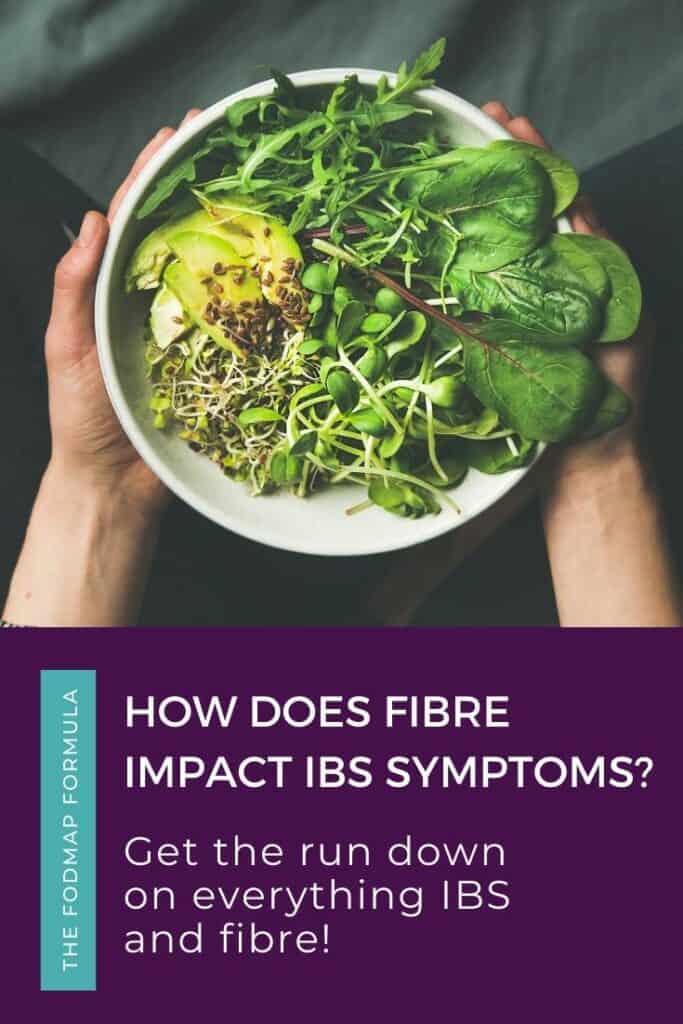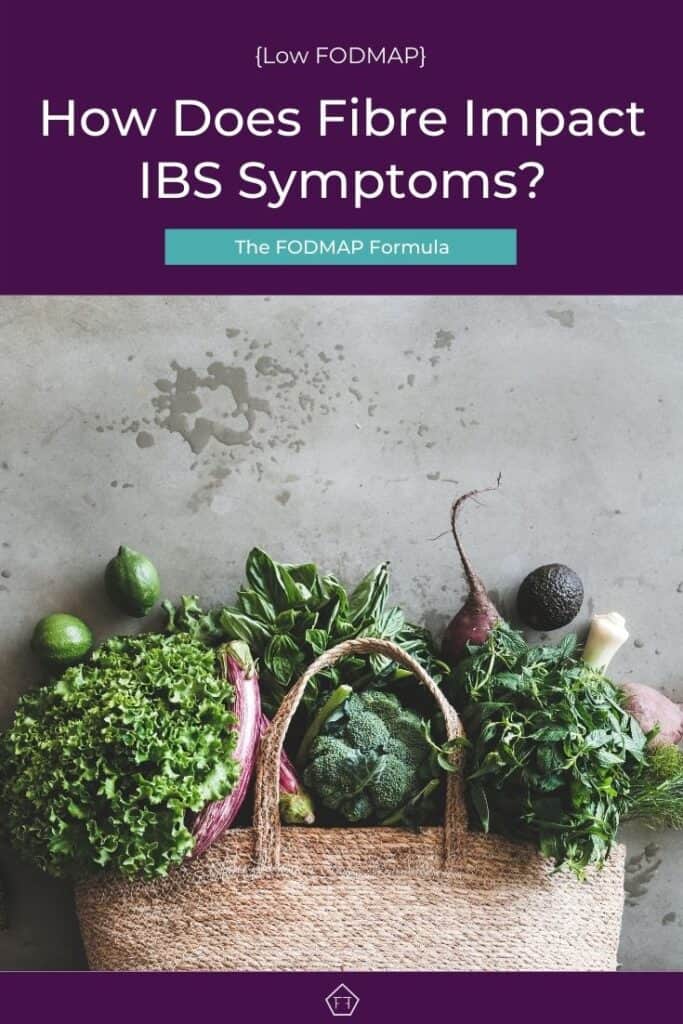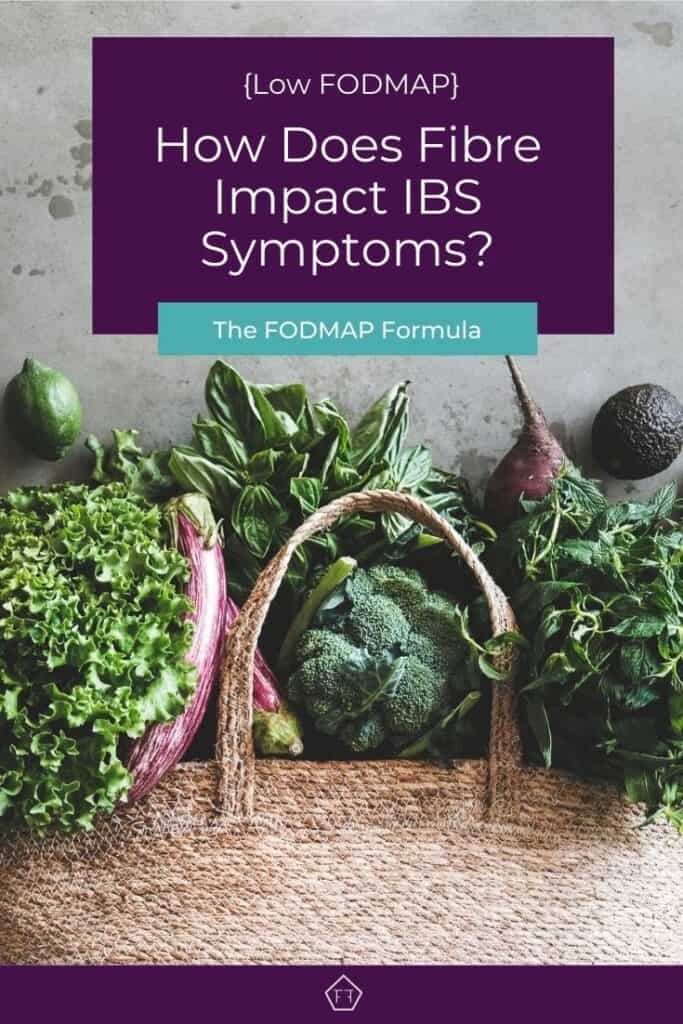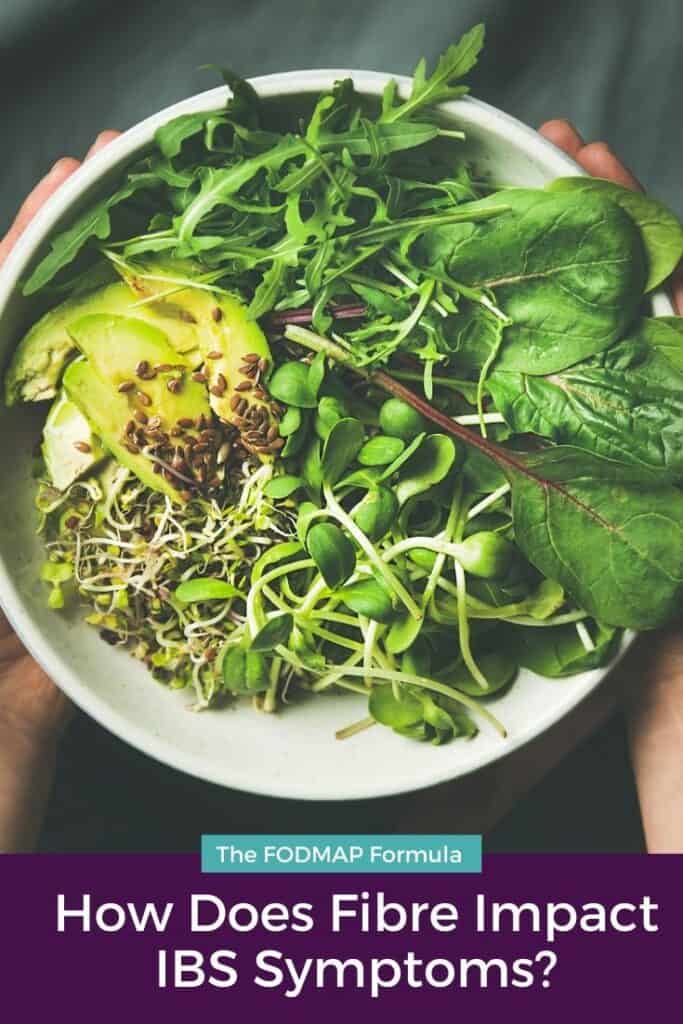Ever wonder why the answer to every IBS question is to add more fibre? What’s so magical about this group of foods that they can solve constipation, diarrhea, and everything in between? In this article, we’re talking about what fibre can (and can’t) do for you, and why it’s something you definitely want to include in your daily diet!
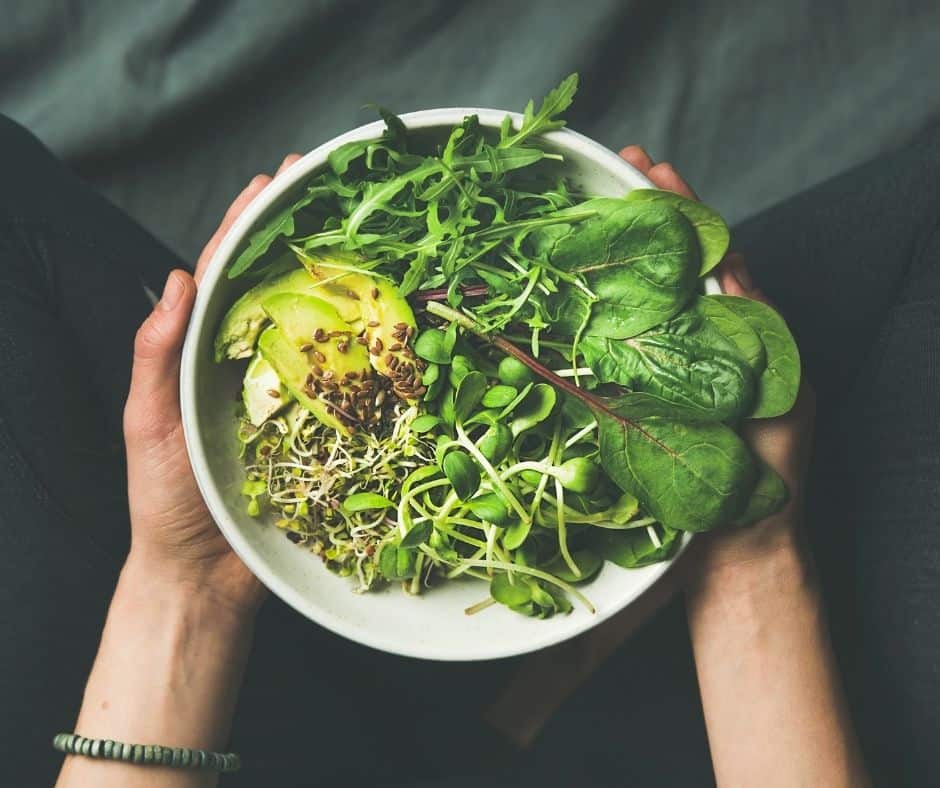
What the heck is fibre?
Before we start talking about which type of fibres are helpful for who, let’s make sure we’re on the same page.
Fibre falls under the carbohydrate umbrella, so you’ll find it in plant-based foods like fruits, vegetables, grains, beans, nuts, and seeds, etc. While some carbohydrates are broken down into sugars and pulled out of the digestive system into our bloodstream, fibre cruises through from one end of our digestive system to the other.
So is it worth all the hype? Honestly, it depends on what you’re expecting it to do. Fibre can help regulate how fast poop travels through your gut, it can help keep you full which can help curb sugar cravings and keep your blood sugar stable throughout the day, and can help keep your heart healthy! So, it’s pretty cool.
How does fibre help IBS?
Here are some ways fibre can be helpful as a symptom management tool for IBS. Keep in mind, everyone’s body is different, so what is healthy and right for one person may not be healthy and right for you.
If you have questions about adjusting your fibre intake to help manage your gut, make sure to touch base with your healthcare team so you get the best bang for your buck!
Using soluble fibre for diarrhea
In addition to mechanical munching, hydrochloric acid, digestive enzymes and a few other tricks, our bodies use water to break down our food.
When soluble fibre enters the small intestine, it breaks down in our gut, pulling in water and forming a gel-like substance around our stool. This helps slow down digestion, so it can be particularly helpful for people with quick gut transit times like those with diarrhea-predominant IBS (IBS-D).
Where can you find soluble fibre?
Soluble fibre can be found in foods like citrus fruits, strawberries, carrots, potatoes, oats, and low FODMAP servings of some beans.
Using insoluble fibre for constipation
Insoluble fibre is fibre that isn’t broken down completely (or at all) in the digestive tract. Since this type of fibre isn’t liquified in your gut, it adds bulk to your stool and can speed up gut transit time. This can make it particularly helpful for people with slow gut transit time like constipation-predominant IBS (IBS-C).
It’s important to note that insoluble fibre can be irritating to the gut. So if you’re wondering if tweaking your fibre may be helpful to you, you’ll want to up your “dose” of fibre slowly and give your gut lots of time (like, many days) to adjust to the increased fibre load. If you go too quickly, you can end up jamming up your guts, which is not what we’re going for!
Many sources of insoluble fibre are also highly fermentable. This can include high FODMAP fodos, as well as fibres commonly found in fibre supplements and laxatives. So if you’re looking to boost your fibre intake, make sure you check in with your healthcare team, or even your pharmacist, to make sure you’re using the right products for your body.
You’ll also want to make sure you’re increasing your water intake to help keep everything working smoothly, while your body adjusts to the extra fibre load.
Where can you find insoluble fibre?
You can find insoluble fibrein low FODMAP servings of green beans, spinach, nuts, beans, whole grains. If you’re finding insoluble fibre a little aggressive, you can lower the fibre content of some foods like vegetables and nuts by peeling off their skins or fibrous bits.
Understanding resistant starches
Now we’re going to get into the fun stuff! Resistant starches are a sassy type of soluble fibre. Unlike other types of soluble fibre, they aren’t completely digested as they work their way through your digestive tract. In other words, they resist digestion.
There are three main types of resistant starch you’ll run into.
Type 1: Cell structure
This type of resistant starch is resistant to digestion because the starch is so securely attached to the cell wall. You can find this type of resistant starch in foods like grains, seeds, legumes and pulses.
Type 2: Starchy Foods
This type of resistant starch is found in foods that are just plain old starchy, jk. This type of starch includes foods like lentils, potatoes, and green (unripe) bananas which resist digestion because their starch molecules are packed so tightly together. This means your body’s digestive mechanisms can’t break them down effectively before they make their… exit.
Type 3: Cooked and cooled starches
This type of starch forms when foods like potatoes, rice, or pasta are cooked and cooled down. In this case, starch chains that have partially dissolved during the cooking process reform in a gel-like substance within (and sometimes around) the food. → Think weird slimy leftover spaghetti noodles.
Because resistant starches aren’t digested, they end up in your colon where they’re fermented by your gut bugs. These types of fibre are called “prebiotics.” Since resistant starches are fermentable, if you’re following the low FODMAP diet, make sure you’re checking the Monash app for low FODMAP serving sizes.
What are prebiotic fibres (and why do you need them)
Prebiotic fibres are like a bagged lunch for your gut bugs. Since your gut bugs eat the foods you can’t break down, prebiotics are mostly found in resistant starches and insoluble fibre. Since your gut bugs ferment the foods they eat, diets low in fibre – like the low FODMAP diet or other low-carb diets – can starve out your gut bugs.
Research has shown that bugs like bifidobacteria begin to starve within 4 weeks. This is one of the reasons the elimination phase is capped at 6 weeks. While you can’t do any permanent damage to your gut bug community in that amount of time, letting your gut bugs go hungry for too long won’t set your gut up for success in the long run.

Why you need a balance of fibres in your diet
While it’s all fine and dandy to yell “fibre, fibre, fibre!!” It’s important to remember that what is healthy and right for one body may not be healthy and right for you!
If your gut is feeling a little helter-skelter lately, adding more fibre may not be the answer for you! It could be shifting the balance of fibres in your diet. Focusing on adding a larger variety of foods to create nutrient diversity for your gut bug community, or even cutting back on fibre if your gut is feeling overworked and needs a minute to catch up with your newfound interest in kale.
All of these things are a-ok! The take-home message here is to meet your body where it is and make small, gradual shifts to help your body work its way back into a happy, healthy place. Fibre can be tricky (see above), so feel free to loop in a FODMAP-trained dietitian or nutritionist to help you do some sleuthing about what may work best for your unique body.
If you like this post, don’t forget to share it! Together we’ll get the low FODMAP diet down to a science!
PS Want access to bonus content, VIP discounts, and some fabulous freebies? Sign up for my mailing list below and you’ll get all these goodies and more sent directly to your inbox!
You might also like one of these:
- 5 Low FODMAP Restaurant Tips Trying to eat out while on the low FODMAP diet can be a panic-inducing experience. But you can absolutely enjoy eating out during the elimination phase with these 5 low FODMAP restaurant tips!
- What Causes IBS-Related Abdominal Pain? Have you ever felt a sharp pain or cramp in your abdomen and wondered if it was caused by your IBS? You may be right! In this article, we’ll talk about what causes IBS-related abdominal pain
- Understanding Lactose Intolerance and IBS Wondering if lactose intolerance may be the culprit behind your tummy troubles? In this article, we’ll talk about what lactose intolerance is, how it’s tested, and how to manage your daily symptoms if you have it.
If you like this post don’t forget to share it! Follow me on YouTube @flipyourleaf for a ton of videos on understanding FODMAPs, IBS mechanics, and how to feel safe in your body. Together we’ll get the low FODMAP diet down to a science!
